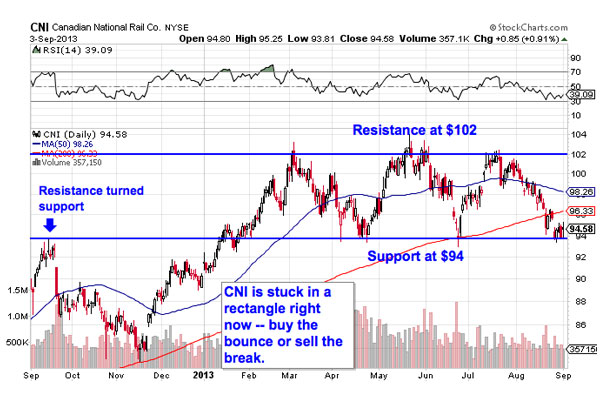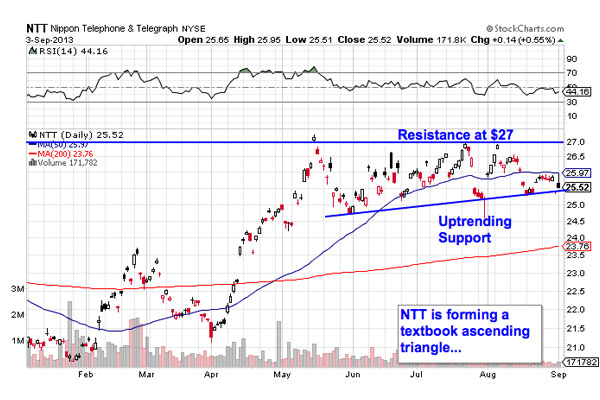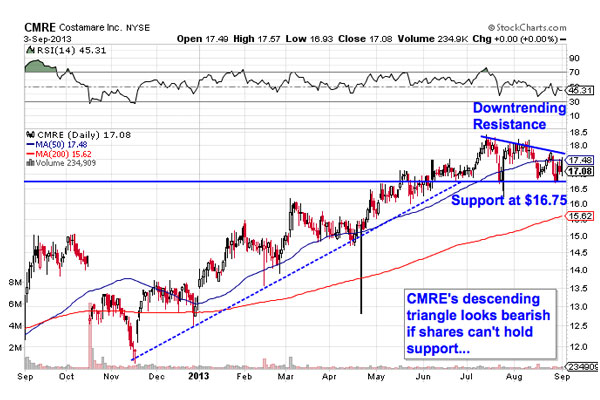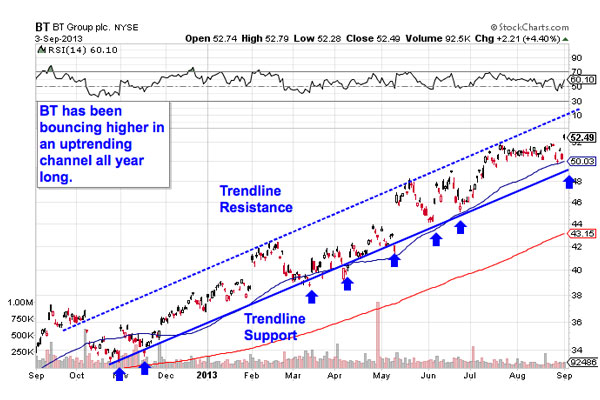Almost half of Americans (47%) say the Affordable Care Act, aka Obamacare, is a bad idea, according to a fresh Wall Street Journal/NBC News poll.
The three healthcare professionals I spoke with this week believe the law overhauling the nation's healthcare system is a terrible idea.
All the doctors are disappointed with the real Obamacare facts they know to be true...
Dr. Michael Lospinuso of Monmouth County, NJ-based Orthopaedic Spine Institute, told Money Morning the sentiment is "unanimous" among his colleagues.
The chief of spinal surgery at Meridian Health, a leading not-for-profit health care provider in New Jerse's and named one of Fortune's "100 Best Companies to Work For" for four consecutive years (2010-2013), the widely accomplished Dr. Lospinuso just returned from Zurich's prestigious Schulthess Clinic, where he was invited to see firsthand how European medicine works.
He likens Obamacare to the two-tier medical insurance system in Europe. The top, or platinum level, is for those who buy private insurance and in return get top-notch care. Meanwhile, the lower level is for those who receive general practice care from the state.
Best Medical Companies To Own For 2014: Multicell Technologies Inc (MCET)
MultiCell Technologies, Inc., incorporated on April 28, 1970, is a biopharmaceutical company. The Company is engaged in developing novel therapeutics and discovery tools to address unmet medical needs for the treatment of neurological disorders, hepatic disease, cancer and interventional cardiology and peripheral vessel applications. The Company�� portfolio of lead drug candidates is in various stages of discovery optimization, and preclinical and clinical development, and includes MCT-125, a Phase II therapeutic candidate for the treatment of PMSF, which has demonstrated efficacy in a 138-patient Phase IIa clinical trial; MCT-465, a preclinical synthetic dsRNA therapeutic candidate and potent immune enhancer for the treatment of solid tumor cancers, such as those expressing TLR-3; MCT-475, a discovery stage antibody therapeutic candidate used in combination with dsRNA for the treatment of solid tumor cancers, and MCT-485, a discovery stage dsRNA therapeutic candidate with tumor cytolytic properties for the treatment of certain cancers.
MultiCell is pursuing research and development targeting degenerative neurological diseases, including multiple sclerosis (MS) and cancer. The Company�� therapeutics business addresses significant unmet medical needs for the treatment of neurological disorders and cancer through modulation of the innate and adaptive immune response. The Company�� therapeutic development platform includes several patented techniques used to isolate, characterize and differentiate stem cells from human liver; control the immune response at transcriptional and translational levels through double-stranded RNA (dsRNA)-sensing molecules such as the Toll-like Receptors (TLRs), RIG-I-like receptor (RLR), and Melanoma Differentiation-Associated protein 5 (MDA-5) signaling; generate specific and potent immunity against key tumor targets through a novel immunoglobulin platform technology; and modulate the noradrenaline-adrenaline neurotransmitter pathway.
The Com! pany�� medical device development platform is based on the design a next-generation bioabsorbable stent, the Ideal BioStent, for interventional cardiology and peripheral vessel applications. The Company�� Ideal BioStent is a stent incorporating salicylate, the active component in aspirin, directly into the polymer chain. The Ideal BioStent also incorporates Sirolimus (rapamycin) in addition to salicylate, providing anti-restenotic therapy similar to commonly used drug-eluting metal stents.
MCT-125 for the treatment of fatigue in patients with multiple sclerosi
Fatigue is the most common symptom in MS. Overall, greater than 75% of persons with MS report having fatigue, and 50% to 60% report it as the worst symptom of their disease. The Company exclusively licensed the drug candidate LAX-202 from Amarin Neuroscience Limited (Amarin) for the treatment of fatigue in patients suffering from MS.
MCT-465, MCT-475 and MCT-485 for the treatment of cancer
MCT-465, MCT-475, and MCT 485 are in preclinical development, and are being investigated as prospective treatments for primary liver cancer and triple negative breast cancer. MCT-465 is a high molecular weight synthetic dsRNA (polyA:polyU, of 70bps) with immune-enhancing properties. MCT-485 is a low molecular weight synthetic dsRNA (polyA:polyU of 5bps) with direct tumor cytolytic properties. MCT-475 is a chimeric recombinant therapeutic antibody molecule that carries tumor-associated antigen peptide recognition in its complimentary determining region (CDR).
Best Medical Companies To Own For 2014: Curis Inc.(CRIS)
Curis, Inc., a drug discovery and development company, focuses on the research and development of cancer therapeutics. The company, under collaboration with Genentech, Inc., is conducting a pivotal Phase II clinical trial on its lead molecule, GDC-0449 in advanced basal cell carcinoma patients, as well as various Phase II clinical trials in first-line metastatic colorectal cancer and advanced ovarian cancer patients. It is also evaluating CUDC-101, a small molecule that is in a Phase I clinical testing and is designed to target histone deacetylase, epidermal growth factor receptor, and epidermal growth factor receptor 2. In addition, Curis has a development candidate, Debio 0932, which is a Heat Shock Protein 90 or Hsp90 inhibitor. The company holds a license agreement with Debiopharm related to its Hsp90 technologies. Further, it involves in preclinical testing for the development of candidates from its targeted cancer programs. The company was founded in 2000 and is base d in Lexington, Massachusetts.
Advisors' Opinion: OncoSec Medical Incorporated, incorporated on February 8, 2008, is an emerging drug-medical device company. The Company focused on designing, developing and commercializing medical approaches for the treatment of solid cancers. In March 2011, the Company acquired from Inovio Pharmaceuticals, Inc. (Inovio) certain assets related to the use of drug-medical device combination products for the treatment of different cancers.
The Company�� acquired assets relate to certain non-deoxyribonucleic acid (DNA) vaccine technology and property relating to selective tumor ablation technologies, which it refers to as the OncoSec Medical System (OMS), a therapy which uses an electroporation device to facilitate delivery of chemotherapy agents, or nucleic acids encoding cytokines, into tumors and/or surrounding tissue for the treatment and diagnosis of various cancers. As of January 24, 2012, the Company had not generated any revenue from operations.
Advisors' Opinion: - [By James E. Brumley]
How does the old saying go? Beggars can't be choosers? Two weeks ago, yours truly penned some bullish comments regarding OncoSec Medical Inc. (OTCMKTS:ONCS). The long and short of it was, if ONCS could clear a technical ceiling around $0.36, then life would get much easier for the bulls.
Best Medical Companies To Own For 2014: Algeta ASA (ALGETA.OL)
Algeta ASA is a Norway-based biotechnology company engaged in the development of targeted cancer therapies based on its alpha-pharmaceutical platform. The Company�� principal product is Alpharadin for the treatment of bone metastases resulting from castration-resistant prostate cancer. The Company�� pipeline also includes Alpharadin for the treatment of bone metastases resulting from breast cancer, a combination of Alpharadin with Taxotere for the treatment of bone metastases resulting from prostate cancer and Thorium-227 showing various cancer indications. The Company develops Alpharadin in a development and marketing cooperation with Bayer Schering Pharma. Algeta ASA is active through the two wholly owned subsidiaries, Algeta Innovations AS and Algeta UK Limited. On April 12, 2012, the Company announced that it estabilished a subsidiary active in the United States, Algeta US.
Best Medical Companies To Own For 2014: Cannabis Science Inc (CBIS.PK)
Cannabis Science, Inc., incorporated on May 4, 2007, is a development-stage company. The Company is engaged in the creation of cannabis-based medicines, both with and without psychoactive properties, to treats disease and the symptoms of disease, as well as for general health maintenance. On February 9, 2012, the Company acquired GGECO University, Inc. (GGECO). On March 21, 2012, the Company acquired Cannabis Consulting Inc. (CCI Group).
The Company is engaged in medical marijuana research and development. The Company works with world authorities on phytocannabinoid science targeting critical illnesses, and adheres to scientific methodologies to develop, produce, and commercialize phytocannabinoid-based pharmaceutical products.
Best Medical Companies To Own For 2014: Telik Inc (TELK)
Telik, Inc. (Telik), incorporated in 1988, is a clinical-stage drug development company focused on discovering and developing small molecule drugs to treat cancer. The Company discovers its product candidates using the Company�� drug discovery technology, Target-Related Affinity Profiling (TRAP). TELINTRA, its principal drug product candidate in clinical development, is a small molecule glutathione analog inhibitor of the enzyme glutathione S-transferase P1-1 (GST P1-1). TELCYTA, its other product candidate, is a small molecule cancer drug product candidate designed to be activated in cancer cells.
Clinical Product Development
TELINTRA is the Company�� lead small molecule product candidate in clinical development for the treatment of blood disorders, including cancer. It has a mechanism of action and acts by inhibiting GST P1-1, an enzyme that is involved in the control of cellular growth and differentiation. Inhibition of GST P1-1 results in the activation of the signaling molecule Jun kinase, a regulator of the function of blood precursor cells. Preclinical tests show that TELINTRA is capable of causing the death or apoptosis of leukemic or malignant blood cells, while stimulating the growth and development of normal blood precursor cells. TELINTRA has been studied in Myelodysplastic Syndrome (MDS) using two formulations. A liposomal formulation was developed for intravenous administration of TELINTRA and was used in Phase I and Phase II studies in MDS patients. The results from the Phase II intravenous liposomal TELINTRA clinical trials demonstrated that TELINTRA treatment was associated with improvement in all three types of blood cell levels in patients with all types of MDS, including those in intermediate and high-risk groups. An oral dosage formulation (tablet) was subsequently developed and results from a Phase I study with TELINTRA tablets showed clinical activity and the formulation to be well tolerated. In June 2011, the Company initiated a Phase II clinical ! trial to evaluate TELINTRA tablets. In October 2011, the Company initiated an additional Phase IIb clinical trial to evaluate TELINTRA tablets. '
The activity and safety profile of tablet formulation allowed the Company to complete a Phase II trial of TELINTRA tablets in MDS. The primary objective of the Phase II TELINTRA tablet study was to determine the efficacy of TELINTRA. A multivariate logistic regression analysis was conducted to identify MDS disease prognostic factors associated with erythroid improvement response rates, including prior MDS treatment, age, gender, the international prognostic scoring system (IPSS), risk, Eastern Cooperative Group performance status, years from MDS diagnosis, MDS World Health Organization subtypes, anemia only versus anemia plus other cytopenias, dose schedule and starting dose. Results from this study show that TELINTRA is the first GSTP1-1 enzyme inhibitor shown to cause clinically reductions in red blood cell transfusions, including transfusion independence in low to intermediate-1 risk MDS patients, as well as improvement in platelet count and white blood cell levels in certain patients. TELINTRA, administered orally twice daily, appeared to be convenient and flexible for chronic treatment administration.
TELCYTA is a small molecule drug product candidate that the Company is developed for the treatment of cancer. TELCYTA binds to GST. TELCYTA has been evaluated in multiple Phase II and Phase III clinical trials, including trials using TELCYTA as monotherapy and in combination regimens in ovarian, non-small cell lung, breast and colorectal cancer. Results from these clinical trials indicate that TELCYTA monotherapy was generally well-tolerated, with mostly mild to moderate side effects, particularly when compared to the side effects and toxicities of standard chemotherapeutic drugs. When TELCYTA was evaluated in combination with standard chemotherapeutic drugs, the tolerability of the combinations was similar to that expected of each! drug alo! ne.
Clinical activity including objective tumor responses and/or disease stabilization was reported in the TELCYTA Phase II trials; however, TELCYTA did not meet its primary endpoints in the Phase III studies. Positive results from a Phase I-IIa multicenter, dose-ranging study of TELCYTA in combination with carboplatin and paclitaxel as first-line therapy for patients with non-small cell lung cancer, or NSCLC, were published in a peer reviewed publication. Clinical data demonstrated positive results of TELCYTA in combination with carboplatin and paclitaxel in the treatment of first-line lung cancer followed by TELCYTA maintenance therapy. As of December 31, 2011, the Company had an on-going investigator-led study at a single site of TELCYTA in patients with refractory or relapsed mantle cell lymphoma, diffuse B cell lymphoma, and multiple myeloma.
Preclinical Drug Product Development
The Company has a small molecule compound, TLK60404, in preclinical development that inhibits both Aurora kinase and VEGFR kinase. Aurora kinase is a signaling enzyme whose function is required for cancer cell division, while VEGF plays a key role in tumor blood vessel formation, ensuring an adequate supply of nutrients to support tumor growth. These lead compounds prevented tumor growth in preclinical models of human colon cancer and human leukemia by inhibiting both Aurora kinase and VEGFR kinase. A development drug product candidate, TLK60404, has been selected.
The Company, using its TRAP technology has discovered TLK60357, a novel, potent small molecule inhibitor of cell division. TLK60357 inhibits the formation of microtubules that are necessary for cancer cell growth leading to persistent G2/M cancer cell cycle block and subsequent cell death. This compound demonstrates potent broad-spectrum anticancer activity against a number of human cancer cells. This compound also displays oral efficacy in multiple, standard preclinical models of cancer. TLK60596, a potent VG! FR kinase! inhibitor, blocks the formation of new blood vessels in tumors. Oral administration of TLK60596 to animal models of human colon cancer reduced tumor growth.
Best Medical Companies To Own For 2014: Cannabis Science Inc (CBIS)
Cannabis Science, Inc., incorporated on May 4, 2007, is a development-stage company. The Company is engaged in the creation of cannabis-based medicines, both with and without psychoactive properties, to treats disease and the symptoms of disease, as well as for general health maintenance. On February 9, 2012, the Company acquired GGECO University, Inc. (GGECO). On March 21, 2012, the Company acquired Cannabis Consulting Inc. (CCI Group).
The Company is engaged in medical marijuana research and development. The Company works with world authorities on phytocannabinoid science targeting critical illnesses, and adheres to scientific methodologies to develop, produce, and commercialize phytocannabinoid-based pharmaceutical products.
Advisors' Opinion: - [By John Udovich]
Although its summer, there has been a steady stream of good news about medical marijuana even though important small cap marijuana stocks�Medical Marijuana Inc (OTCMKTS: MJNA) and Cannabis Science Inc (OTCMKTS: CBIS) have been fairly quietly lately while Growlife Inc (OTCBB: PHOT), a more indirect play on the spread of legalized marijuana, has produced�some news for investors:
- [By John Udovich]
Small cap marijuana stocks Medical Marijuana Inc (OTCMKTS: MJNA), Cannabis Science Inc (OTCMKTS: CBIS), Medbox Inc (OTCMKTS: MDBX), Growlife Inc (OTCBB: PHOT) and HEMP, Inc (OTCMKTS: HEMP) were all surging by double digits yesterday thanks in part to legal sales of pot beginning in Colorado.
- [By Bryan Murphy]
The last few days have been nothing less than incredible for stocks like Cannabis Science Inc. (OTCMKTS:CBIS), Medbox Inc. (OTCMKTS:MDBX), Growlife Inc. (OTCBB:PHOT), and Medical Marijuana Inc. (OTCMKTS:MJNA). MJNA shares have jumped 90% since last Friday. PHOT is up 51% for the same timeframe. CBIS has grown 150%, while MDBX is up 112%. The reason? It's largely the legalization of recreational marijuana in Colorado - a law that went into effect as of January 1st. The legalization of medical marijuana in Illinois on the same day didn't hurt either. And truth be told, the event-based rally from the likes of Medbox and Cannabis Science makes basic sense - it's a landmark shift in the way this country views and treats marijuana. On the flipside, before wading any deeper into stocks like Medical Marijuana or Growlife, current and would-be owners might want to take a step back and look at the bigger picture.
- [By James E. Brumley]
Wow. That didn't take long. It was only two days ago that marijuana stocks like Growlife Inc. (OTCBB:PHOT), Medical Marijuana Inc. (OTCMKTS:MJNA), Cannabis Science Inc. (OTCMKTS:CBIS), Medbox Inc. (OTCMKTS:MDBX), and Hemp, Inc. (OTCMKTS:HEMP) were all the rage, flying high on the heels of a new year... a new year in which marijuana was legalized (for one reason or another) in two more states. HEMP was up as much as 700% in less than three weeks at one point. MDBX gained 300% at the beginning of the year, when recreational marijuana began to be legally sold in Colorado. CBIS jumped 400% off of its December low. MJNA nearly doubled on the advent of new marijuana venues. PHOT soared more than 130% since the end of last year on the legalization of marijuana. It was, truthfully, some of the fastest big money that traders have ever made in the market.
Best Medical Companies To Own For 2014: Prima BioMed Ltd (PRR)
Prima BioMed Ltd is a biotechnology company is engaged in the development and commercialization of medical therapies with a focus on oncology. Its product candidates in development include Cvac, an autologous dendritic cell vaccine for ovarian cancer, monoclonal antibodies for multiple tumour types, and an oral formulation for the human papilloma virus (HPV), vaccine. Its product candidate Cvac is a dendritic cell therapy, for which it is conducting a Phase IIb trial for the treatment of ovarian cancer. Cvac is designed to target the tumour antigen mucin-1, which is expressed at high levels on different tumour types. It also has two preclinical product development programs. In May 2011, Prima BioMed GmbH, a 100 % owned subsidiary of Prima BioMed Ltd, was incorporated in Germany. In May 2011, Prima BioMed Middle East FZLLC, a 100 % owned subsidiary of Prima BioMed Ltd, was incorporated in the United Arab Emirates.




